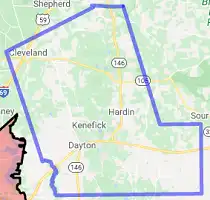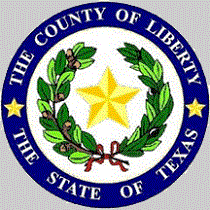Loading Data
Find USDA Eligible Properties in Liberty County
 browse list of realtors working in Liberty County
browse list of realtors working in Liberty County
Liberty county has 2 usdaproperties.com realtors ready to help with your search!
| May Featured Agents | |
|---|---|
| Daniel Loria | from RE/MAX Excellence |
| Cathy Lakey | from Coldwell Banker Realty |
Looking to buy in Liberty County, Texas?
There are 132 USDA backed residential loans in Liberty county with an average loan balance of $110,443. Over 87% of the loans helped first time home buyers. Borrowers were an average age of 40 years old. The typical appraised home value was around $114,798. On average the rural home size purchased with this loan was approximately 1,607 SqFt. Alternate income limits exist to determine loan eligibility in Liberty county. For a household of upto 4 people the income limit is $90,650. For a household of between 5 and 8 people the income limit increases to $119,650.
The size of Liberty County is roughly 3,051 square kilometers. There are no geographical USDA loan restrictions in this county. The influence score for Liberty County is 1. Look below for the interactive county level map illustration below for more details.
Select from the list of cities below or use the search feature to find active property listings in a city where you would like to live.
Start your search for USDA loan eligible properties in the cities of Liberty County, TX ![]()
* cities most likely to have USDA loan eligible properties for sale.
*Ames • *Big Thicket Lake Estates • Clark • *Cleveland • *Daisetta • *Dayton • *Dayton Lakes • *Devers • Dolen • Eastgate • Felicia • Fuqua • *Hardin • Hightower • *Hull • *Kenefick • *Liberty • Macedonia • Milvid • Moss Bluff • Moss Hill • *North Cleveland • Pedeco • *Plum Grove • Rayburn • Raywood • Romayor • Rye • Sandune • Seaman • Stilson
A USDA loan is a mortgage option available to eligible homebuyers that is sponsored by the United States Department of Agriculture to promote homeownership in rural communities. USDA Loans, sometimes called "RD Loans," offer 100% financing options on eligible rural properties. USDAProperties can help you find USDA properties in Liberty County.
View the detailed USDA boundaries and read about general conditions of
Liberty County, Texas
 .
.Liberty County, located in the great state of Texas, has a rich and diverse history. Established in 1831 as one of the original 23 Mexican municipalities in Texas, it was originally named Villa de la Santisima Trinidad de la Libertad, which translates to "Town of the Most Holy Trinity of Liberty." Following Texas independence from Mexico, the county officially became Liberty County in 1836. The county seat is the city of Liberty, which is one of the oldest towns in the state.
Throughout its history, Liberty County has experienced significant agricultural and economic development. In the early years, the county's economy was primarily based on agriculture, particularly cotton, corn, and timber production. The fertile land and navigable rivers provided ideal conditions for these industries to thrive. By the start of the 20th century, the discovery of oil in the South Liberty Oil Field in 1925 spurred a boom in the local economy.
Over the years, Liberty County's population grew significantly as people were attracted to this prosperous region. In the early 1900s, the Houston East and West Texas Railway facilitated the transportation of goods and people, further contributing to the region's growth.
One fun fact about Liberty County is that it is home to the intriguing Dalby Springs Spillway, which is also known as the "Mystery Sinkhole." This unique geological feature was created by the natural erosion of a rock formation, resulting in a deep sinkhole with a waterfall. Locals and tourists alike are drawn to this unusual natural attraction, which adds to the charm of the region.
In summary, Liberty County in Texas boasts a rich historical background with its origins in Mexican governance and later the Republic of Texas. Its thriving agricultural and oil industries contributed to its growth, and natural attractions such as the Dalby Springs Spillway offer unique experiences for residents and tourists alike.
Featured Cities of Texas






